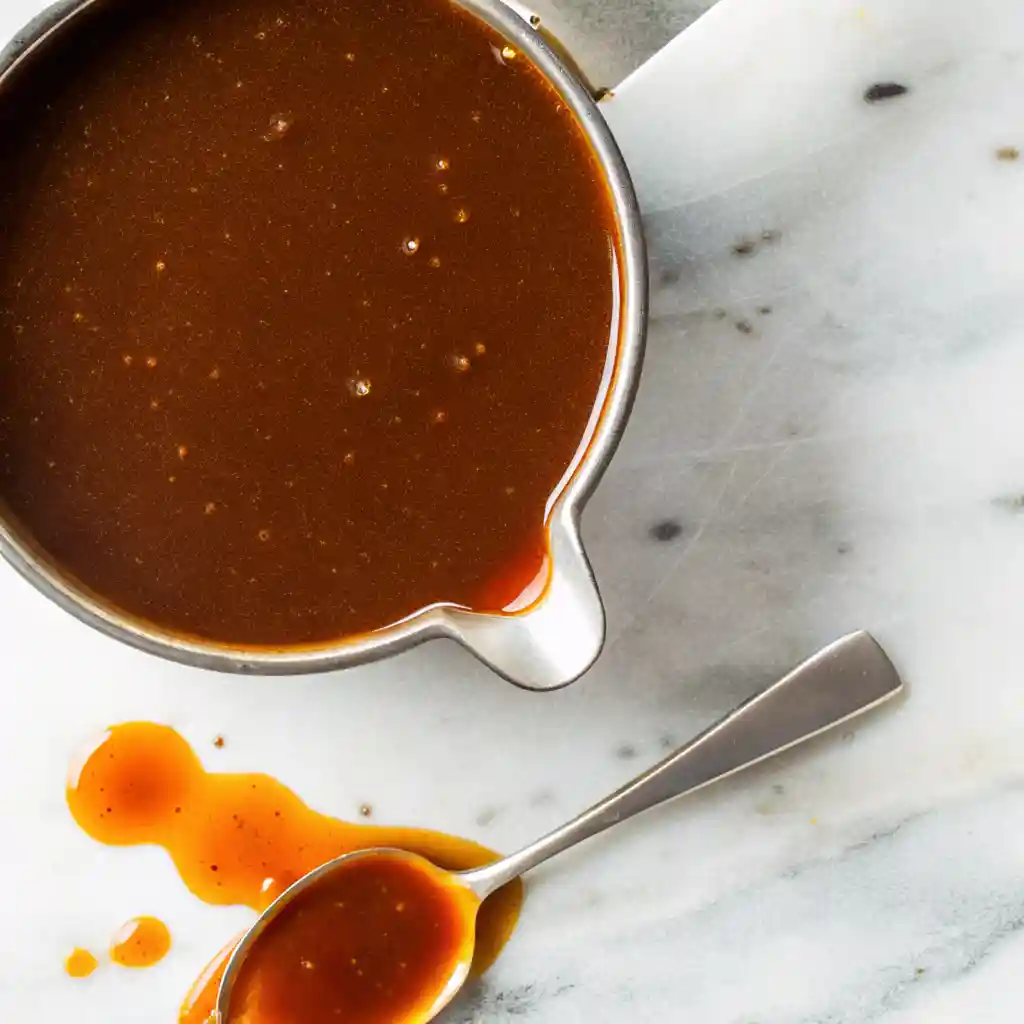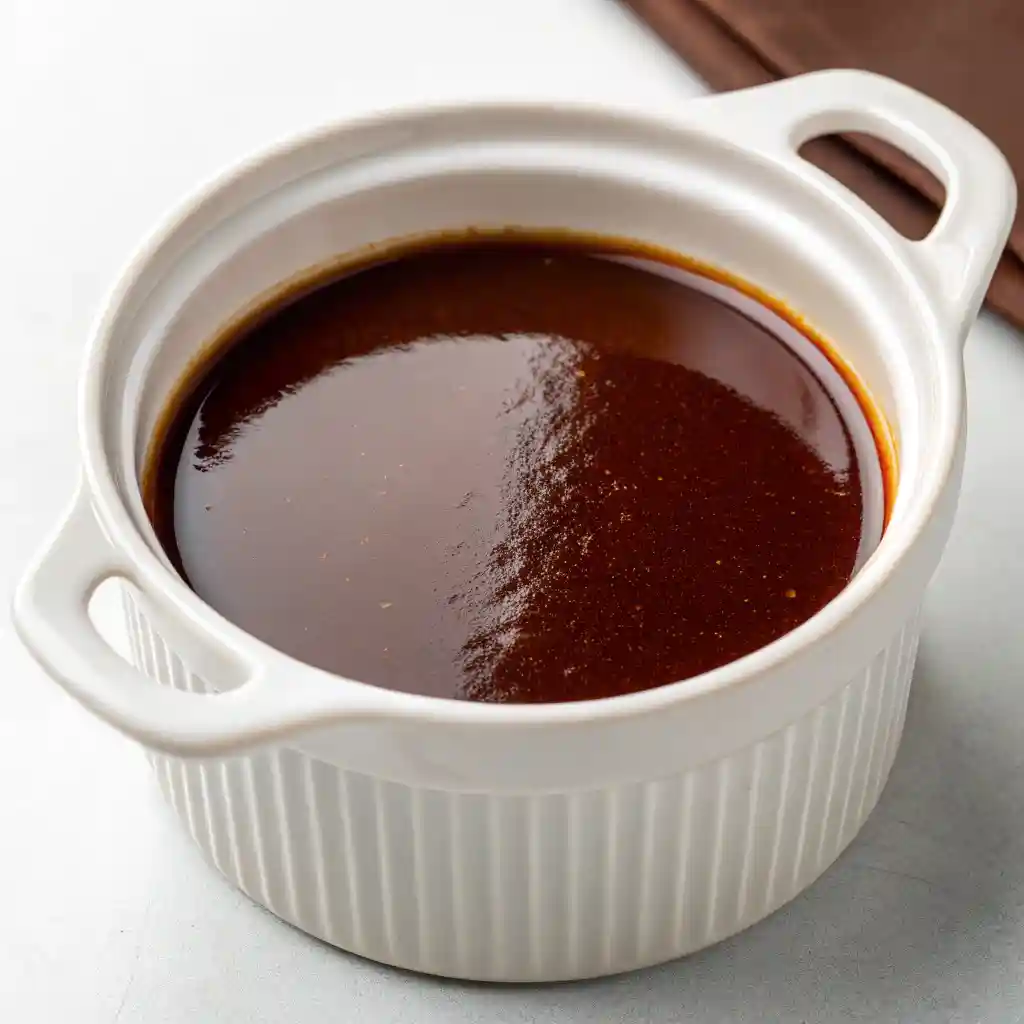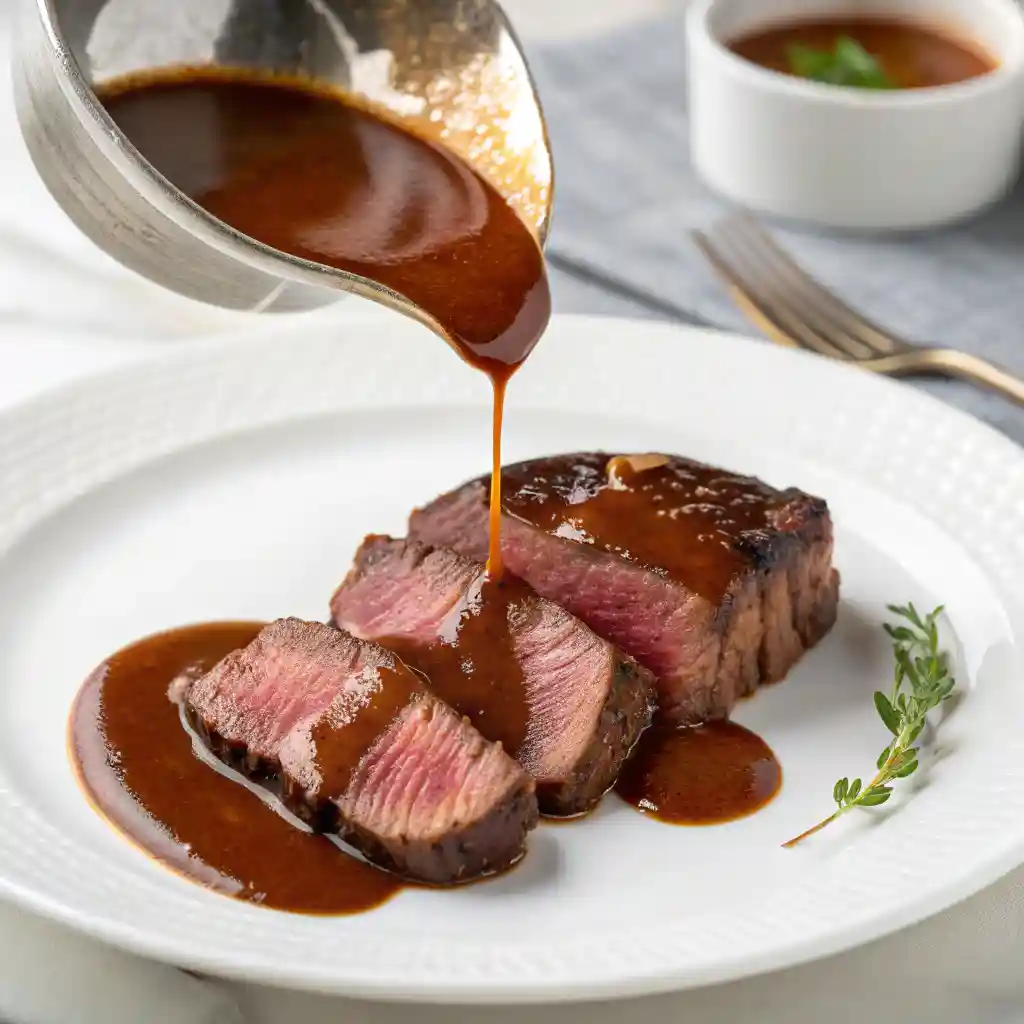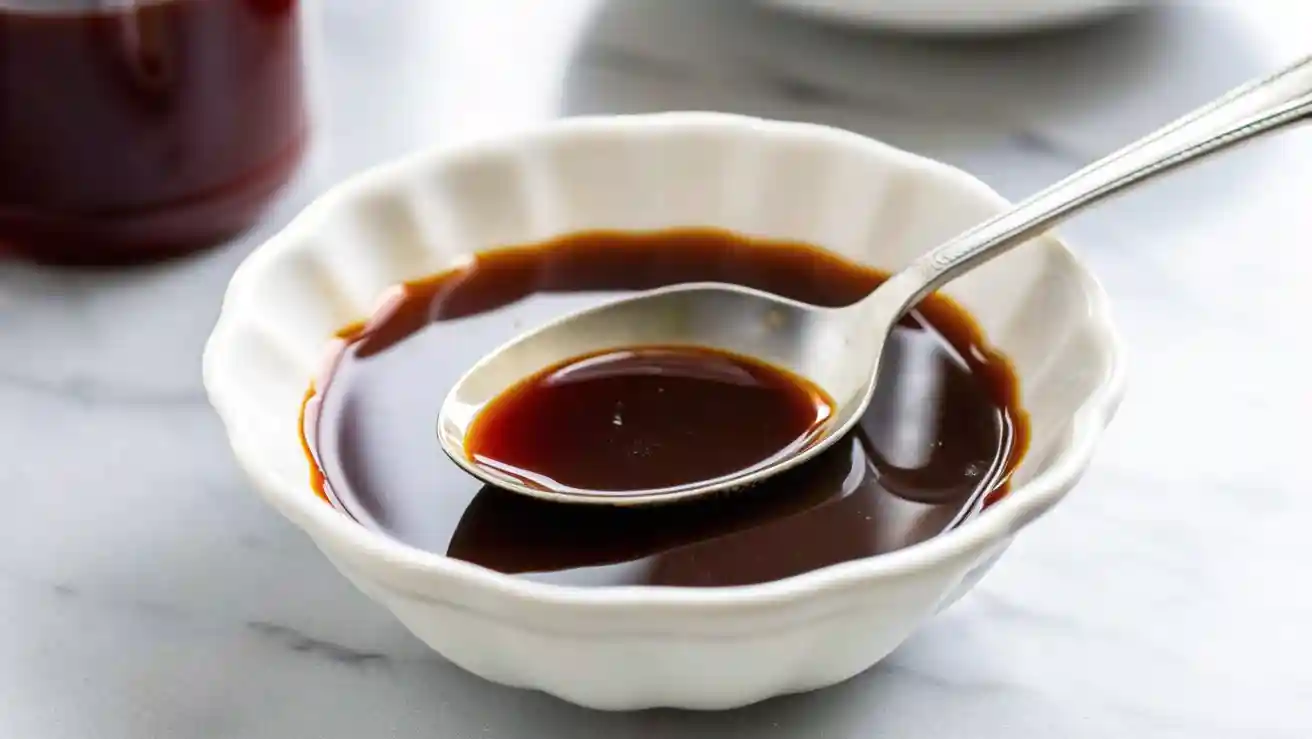Have you ever tasted a sauce so rich and flavorful it made the entire dish unforgettable? That’s the magic of demi-glace—a deeply concentrated, silky sauce that’s the backbone of countless classic French recipes. Whether you’re aiming to elevate a simple steak or add a gourmet finish to your favorite savory dishes, this flavor-packed base delivers. Making your own homemade demi-glace might sound like a culinary challenge, but with the right steps and a bit of patience, it becomes surprisingly approachable—and incredibly rewarding. In this recipe, I’ll guide you through a simple method to achieve that deep, glossy finish you’ve seen in gourmet kitchens.
Table of Contents
Why You’ll Love this Demi-Glace

Why should you invest the time and care into making your own demi-glace from scratch? Because the payoff is huge. This isn’t just another sauce—it’s a culinary powerhouse that transforms ordinary dishes into something unforgettable. Here’s what makes it worth every simmering hour:
Unmatched Depth of Flavor
Homemade demi-glace has a rich, concentrated taste you simply can’t get from store-bought sauces or shortcuts. Roasting bones and slow-simmering aromatics unlock layers of umami that amplify everything they touch.
Versatile and Elegant
Use it as a base for pan sauces, gravies, soups, stews, and reductions. Whether you’re finishing a perfectly seared steak or enhancing a mushroom risotto, demi-glace adds sophistication and complexity.
Restaurant-Quality Results at Home
This is the kind of sauce chefs swear by. By making it yourself, you bring that same depth and professional touch into your own kitchen—without needing a culinary degree.
Freezer-Friendly for Long-Term Use
Once made, demi-glace stores beautifully in the freezer. Portion it into ice cube trays or small jars and pull out a bit whenever your dish needs a boost.
Clean, Customizable Ingredients
Skip the preservatives and artificial flavors found in packaged versions. When you make your own, you’re in full control—adjusting seasoning, using grass-fed bones, or skipping salt altogether if needed.
Think of demi-glace as your secret weapon—it doesn’t just add flavor, it builds it, turning good recipes into great ones.
Ingredients You’ll Need

Making demi-glace from scratch starts with quality ingredients and a little patience. Below is everything you’ll need to build a rich, deeply flavorful base. Each component plays a key role in developing the sauce’s signature depth and body.
For the Brown Stock (First Step)
This forms the backbone of your demi-glace and requires a long, slow simmer to extract maximum flavor and gelatin.
- 4–5 lbs veal bones (cut to expose the marrow; you can substitute with beef bones if needed)
- 2 carrots, roughly chopped
- 2 celery stalks, roughly chopped
- 2 medium onions, quartered
- 2 tablespoons tomato paste
- 2–3 cloves garlic, crushed
- 1 bay leaf
- 4–5 sprigs fresh thyme
- 6–8 whole black peppercorns
- Cold water, enough to cover everything in the pot
For the Sauce Espagnole (Second Step)
This is the thickened brown sauce that combines with your stock to become the base of the demi-glace.
- 2 tablespoons unsalted butter
- 2 tablespoons flour (for making a roux)
- 1 small onion, finely diced
- 1 small carrot, finely diced
- 1 celery stalk, finely diced
- 1 tablespoon tomato paste
- 2 cups of the brown stock (prepared from step one)
Final Reduction (Combining Both)
Once your brown stock and Espagnole sauce are done, they’re simmered together and reduced until thick and glossy.
- Espagnole sauce
- Remaining brown stock (approximately 4–5 cups after straining)
Notes:
- Veal bones are ideal because of their high collagen content, which creates that luscious, gelatin-rich texture. However, beef bones work well if veal is unavailable.
- Always roast the bones and vegetables for maximum flavor.
- Use fresh herbs when possible—dried alternatives won’t offer the same depth.
- Filtered or cold water helps extract better flavor during the long simmer.
With your ingredients prepped, you’re ready to start building this foundational French sauce.
How to Make Demi-Glace

Follow these steps and your demi-glace will reward you with deep, restaurant-worthy flavor.
1. Roast the Bones and Vegetables
- Preheat the oven to 425 °F / 220 °C.
- Spread the veal bones on a sturdy roasting pan. Tuck in the carrots, celery, and onions.
- Roast for 40–45 minutes, turning once, until everything is dark golden brown. Deep color here equals deep flavor later.
2. Deglaze the Pan
- Transfer the roasted bones and vegetables to a large stockpot.
- Place the hot pan on the stovetop. Pour in ½ cup water and scrape up every browned bit with a spoon.
- Add this flavorful liquid to the pot—those caramelized bits are pure gold.
3. Build the Brown Stock
- Stir in the tomato paste, garlic, bay leaf, thyme, and peppercorns, then pour in cold water until the contents are submerged by about 2 inches.
- Bring to a gentle boil, then lower to the faintest simmer. Skim off any foam.
- Let it simmer 6–8 hours, uncovered, adding water as needed to keep the bones submerged.
- Strain through a fine-mesh sieve; discard solids. You should end up with approximately 6 cups of deeply flavored brown stock.
4. Prepare the Sauce Espagnole
- Place a saucepan over medium heat and melt 2 tablespoons of butter until fully liquefied. Whisk in 2 Tbsp flour to form a light brown roux; cook 3 minutes.
- Stir in the finely diced onion, carrot, and celery; cook until softened, about 5 minutes.
- Add 1 Tbsp tomato paste; cook 1 minute.
- Gradually whisk in 2 cups of the brown stock and let it simmer for about 20 minutes, stirring occasionally until the sauce thickens slightly.
5. Combine and Reduce
- Pour the Espagnole sauce and the remaining brown stock into a clean pot.
- Bring to a gentle simmer and reduce by half—this takes about 1½–2 hours. Stir from time to time and remove any surface impurities to maintain a clean, refined finish.
6. Final Strain and Cool
- When the sauce coats the back of a spoon with a glossy sheen, remove from heat.
- Strain through a chinois or fine sieve into a heat-safe bowl.
- Let it cool to room temperature, then refrigerate. The sauce will set into a soft gel as the natural gelatin firms up.
7. Portion and Store
- Refrigerator: Store in a sealed jar and use within 7 days.
- Freezer: Spoon into ice-cube trays or small containers; freeze for 3 months. Pop out a cube anytime a dish needs a flavor boost.
Your homemade demi-glace is ready—rich, silky, and primed to lift any meal to new heights.
Pro Tips and Variations

Crafting a perfect demi-glace takes time, but a few smart moves can make it smoother—and even better. Whether you’re looking to save time, tweak the flavor, or get the clearest reduction possible, these pro tips and variations will help you succeed from the first batch.
Pro Tips for Best Results
Roast Dark, Not Just Brown
The depth of your final flavor starts in the oven. Aim for a deep brown on the bones and veggies—not burnt, but boldly caramelized. That’s where the umami lives.
Keep the Simmer Gentle
A rolling boil can cloud your stock and muddy the flavors. Instead, go for a bare simmer—just a few lazy bubbles now and then.
Skim Often for Clarity
Fat and foam rise to the top during simmering. Skim them off every 20–30 minutes for a cleaner, more refined sauce.
Don’t Salt Too Early
Demi-glace reduces a lot, so adding salt at the beginning can lead to an overpoweringly salty finish. Season only at the end—or not at all if you’re storing it to use in other sauces.
Use the Right Pot
A tall, narrow stockpot helps concentrate the flavors without losing too much liquid to evaporation. It also makes skimming easier.
Flavor Variations to Try
Beef-Only Version
If veal bones are hard to find, you can use beef marrow bones. The result will be darker and more robust, though slightly less silky.
Herb Infusion
Tuck in rosemary, sage, or a garlic head with the thyme bundle during simmering for a custom aromatic profile.
Vegetable-Based Shortcut
Need a vegetarian base? Try a slow-roasted veggie demi-glace using mushrooms, onions, tomato paste, and umami-rich ingredients like miso or soy sauce. It won’t be traditional, but it will still pack punch.
Time-Saving Options
- Pressure Cooker Brown Stock: Cut down the simmer time from 8 hours to 2–3 hours using a pressure cooker, while still extracting deep gelatin and flavor.
- Make-Ahead Espagnole: Cook and freeze the Espagnole separately, then combine with fresh or leftover stock when needed.
Once you get comfortable, feel free to experiment. The beauty of demi-glace lies in how it adapts—quietly amplifying whatever it touches, no matter your cooking style.
How to Use Your Demi-Glace

Once you’ve got a batch of rich, glossy demi-glace on hand, the possibilities are endless. It’s not just a finishing sauce—it’s a flavor booster that can turn simple meals into standout dishes. Here are some of the best ways to use it:
Over Steaks and Roasts
Warm a few tablespoons of demi-glace and spoon it over a grilled ribeye, roast beef, or lamb chops. The silky texture and deep flavor add an elegant finish that rivals any steakhouse.
Enhance Poultry and Duck
Serve it with roast duck, turkey breast, or chicken thighs. Pair it with a touch of orange zest for a personalized glaze or sauce.
Elevate Mushroom Dishes
Stir into sautéed mushrooms or a mushroom risotto for a bold, earthy richness. It’s a fantastic way to mimic meaty flavors in vegetarian recipes.
Upgrade Pasta and Grains
Fold into creamy pasta sauces or stir into farro, barley, or couscous. Just a spoonful gives a savory depth you won’t believe came from such a small amount.
Layer into Soups and Stews
Add a cube or two into hearty soups, stews, or braises. It deepens the broth and rounds out the flavor without overpowering.
Drizzle on Vegetables
Don’t overlook the power of demi-glace on roasted root vegetables, grilled asparagus, or sautéed green beans. It turns them into something special—no meat required.
Whether you’re planning a fancy dinner or reviving leftovers, a spoonful of demi-glace goes a long way. Keep it ready in the freezer and watch how often you reach for it—it’s the kind of ingredient you didn’t know you were missing.
Final Thoughts
Making your own demi-glace might take time, but the results are more than worth it. This rich, velvety sauce adds depth and complexity to everything from simple steaks to elegant reductions. With just bones, vegetables, and patience, you can create a restaurant-quality flavor base right in your kitchen.
Once you’ve tasted the difference, you’ll want to keep it on hand—frozen in cubes, ready to drop into any dish that needs a boost. It’s one of those classic preparations that elevates your cooking without demanding constant attention.
Whether you’re building a pan sauce, enriching a soup, or glazing vegetables, demi-glace delivers unmatched flavor in just a spoonful. And if you’re looking for more ways to level up your sauces, try pairing it with something bold and zesty like this New Orleans Remoulade Sauce for a unique flavor contrast.

Demi-Glace Recipe
Ingredients
For the Brown Stock:
- 4 –5 lbs veal bones or beef bones, cut to expose marrow
- 2 carrots roughly chopped
- 2 celery stalks roughly chopped
- 2 medium onions quartered
- 2 –3 garlic cloves crushed
- 2 tablespoons tomato paste
- 1 bay leaf
- 4 –5 sprigs fresh thyme
- 6 –8 whole black peppercorns
- Cold water enough to cover bones
For the Sauce Espagnole:
- 2 tablespoons unsalted butter
- 2 tablespoons all-purpose flour
- 1 small onion finely diced
- 1 small carrot finely diced
- 1 celery stalk finely diced
- 1 tablespoon tomato paste
- 2 cups of brown stock from above
For the Final Demi-Glace Reduction:
- Remaining brown stock approx. 4–5 cups
- Prepared Espagnole sauce
Instructions
Roast the Bones and Vegetables:
- Preheat your oven to 425°F (220°C).
- Arrange veal bones, carrots, celery, and onions in a large roasting pan.
- Roast for 40–45 minutes, turning once, until deeply browned.
Deglaze the Roasting Pan:
- Transfer the roasted bones and vegetables to a large stockpot.
- Deglaze the hot roasting pan with ½ cup water, scraping up all browned bits.
- Pour this liquid into the stockpot—it’s packed with flavor.
Make the Brown Stock:
- Add garlic, tomato paste, bay leaf, thyme, peppercorns, and cold water (to cover everything).
- Bring to a gentle boil, then reduce to a bare simmer.
- Skim foam regularly and simmer 6–8 hours, uncovered.
- Strain through a fine sieve and discard solids. You should have ~6 cups of stock.
Prepare the Espagnole Sauce:
- In a saucepan, melt 2 tablespoons butter over medium heat.
- Whisk in 2 tablespoons flour and cook for 2–3 minutes until lightly golden.
- Add diced onion, carrot, and celery; cook until softened (about 5 minutes).
- Stir in 1 tablespoon tomato paste and cook for 1 minute.
- Gradually whisk in 2 cups brown stock. Simmer 20 minutes, stirring occasionally, until slightly thickened.
Combine and Reduce:
- In a clean pot, combine the Espagnole sauce and remaining brown stock.
- Simmer gently over medium-low heat, uncovered, for 1½ to 2 hours, reducing by half.
Strain and Cool:
- Strain through a chinois or fine sieve for a smooth finish.
- Cool to room temperature, then refrigerate. It will set into a soft gel.
Store:
- Refrigerator: Store in an airtight container for up to 1 week.
- Freezer: Freeze in ice cube trays or small containers for up to 3 months.
Notes
| Nutrient | Amount |
|---|---|
| Calories | 35 kcal |
| Total Fat | 1.8 g |
| Saturated Fat | 0.6 g |
| Cholesterol | 5 mg |
| Sodium | 40 mg |
| Carbohydrates | 2 g |
| Fiber | 0.3 g |
| Sugar | 0.7 g |
| Protein | 3.2 g |
FAQs
Can I freeze demi-glace?
Absolutely. Demi-glace freezes beautifully. Pour it into ice cube trays or small containers, then transfer to a freezer bag once solid. It keeps for up to 3 months and can be reheated directly from frozen.
How long does demi-glace last in the fridge?
Stored in an airtight container, demi-glace will last up to 1 week in the refrigerator. Make sure it’s fully cooled before sealing to prevent condensation and spoilage.
Can I use beef bones instead of veal bones?
Yes, beef bones are a great substitute if veal is hard to find. The flavor will be slightly deeper and more robust, though the texture may be less silky due to lower gelatin content.
What’s the difference between demi-glace and stock?
Stock is the base—liquid simmered from bones and aromatics. Demi-glace is stock reduced with Espagnole sauce until thick and concentrated. It’s more flavorful, richer, and ideal for finishing sauces.
Can I make a vegetarian version?
While not traditional, you can create a vegetarian alternative using roasted mushrooms, onions, tomato paste, and umami-rich additions like soy sauce or miso. It won’t gel like the original but still offers deep, savory notes.

